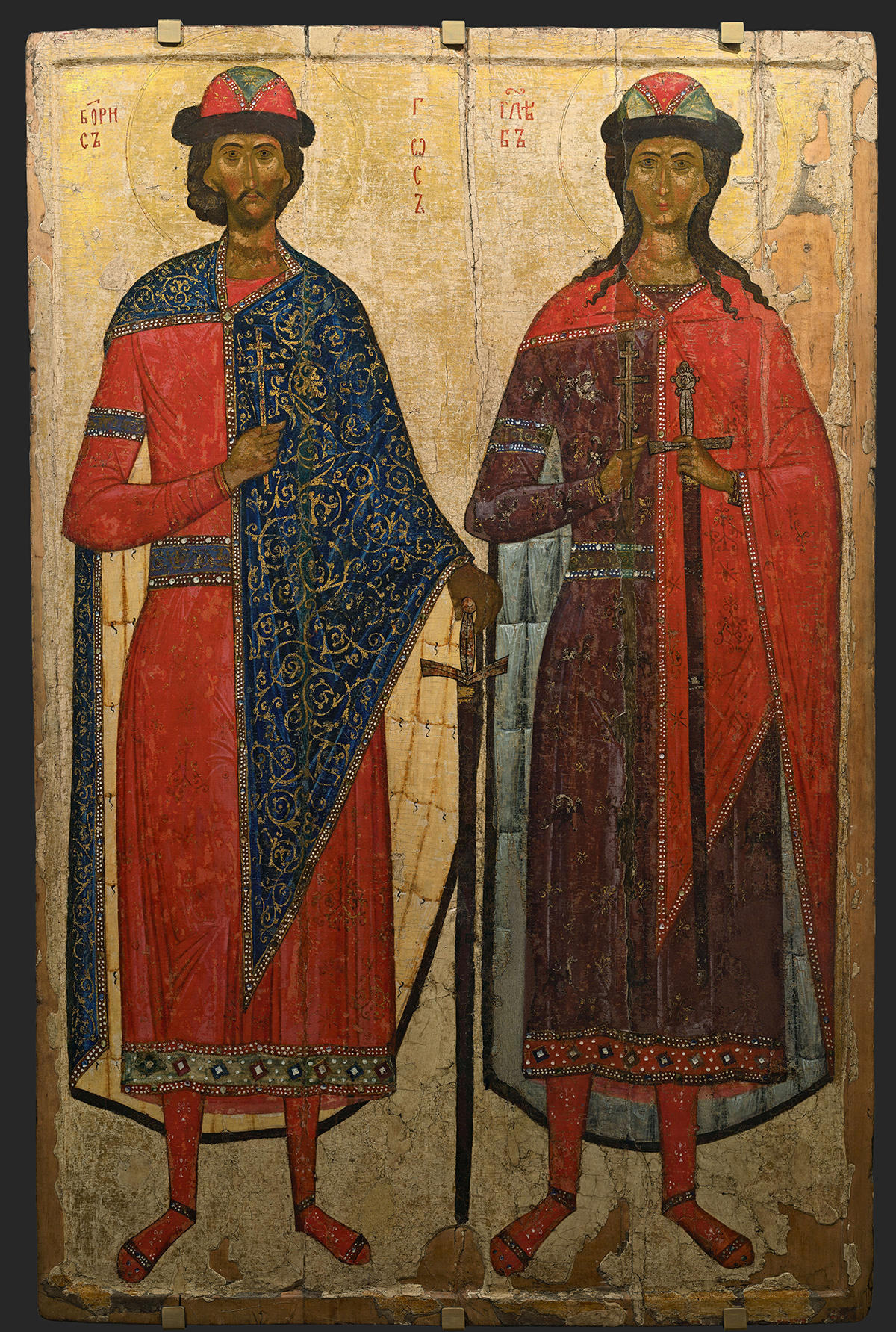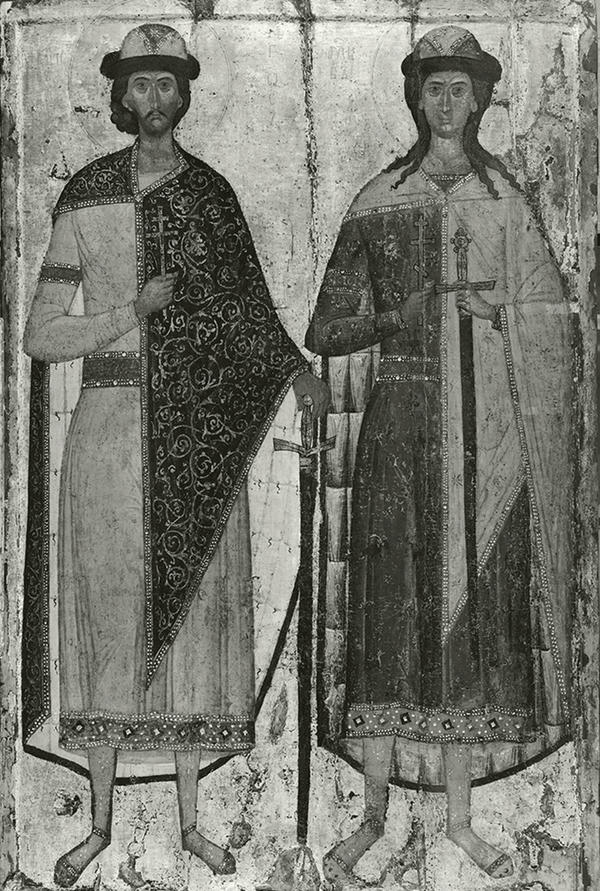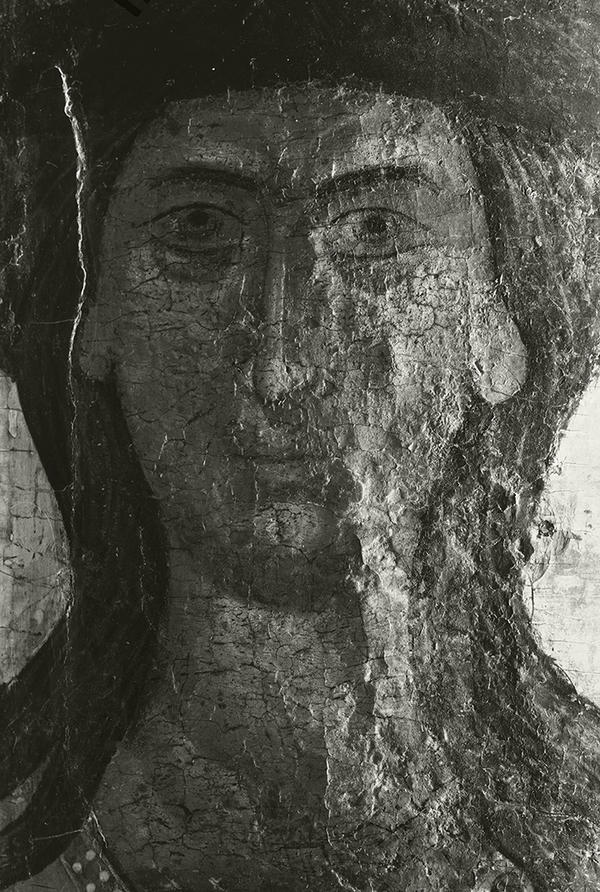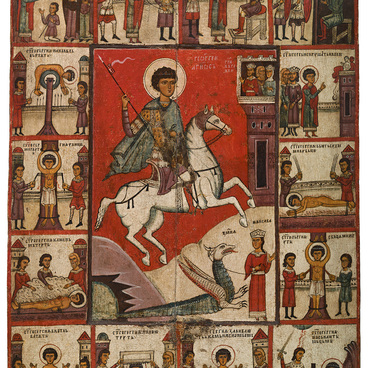Boris and Gleb were sons of Prince Vladimir, under whose rule the baptism of Russia took place. After the death of the Prince in 1015 the struggle for the throne of Kiev began. According to a legend, during the war the eldest son of Vladimir, Svyatopolk, killed his full brothers. So Svyatopolk got the nickname The Accursed, and Boris and Gleb became the first Russian saints.
1 / 3
St. Boris and St. Gleb
Время создания
Second half of the XIV century
Техника
Tempera on Wood
Коллекция
44
Открыть в приложении#1
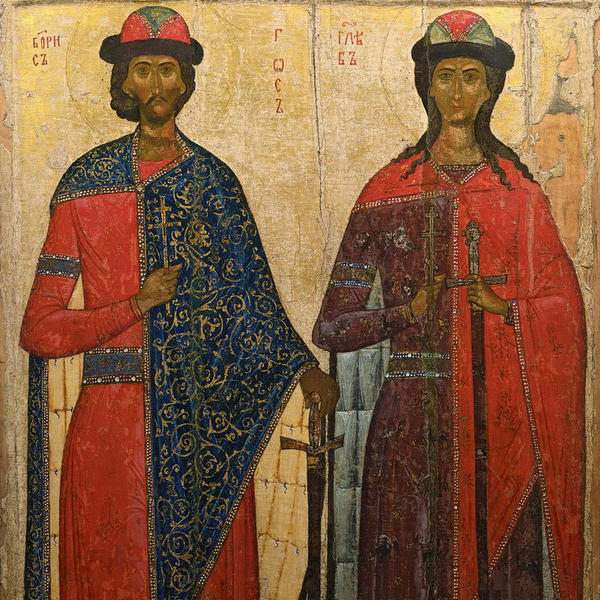
Unknown Author
St. Boris and St. Gleb
#2
#3
The icon from the Russian Museum collection is one of the oldest among the images of the holy princes that reached us. Most researchers attribute the work to the Moscow school of icon painters of the second half of the 14th century.
It was customary in the iconographic tradition to portray the brothers standing side by side, frontally and in full-length. Each of them holds a cross — a symbol of martyrdom — and a sword, an attribute of princely power and an instrument of martyrdom.
#4
Little was known about the appearance of the princes. In the Tale of Boris and Gleb (beginning of the 11th century), Boris was described as a tall, slender young man with broad shoulders and a thin waist, he still had a young mustache. So he appears like that on the icon. There was no information about the appearance of Gleb. Since he was younger, the author portrayed him beardless, with long, loose hair over his shoulders. Due to the lack of the horizon line, one gets the feeling that the saints do not stand, but float in the air.
#5
The artist painted the image with bright and pure colors that had a sacred meaning. Golden background denotes eternity, greatness, divine light. The author covered the tunics and cloaks of the princes with thin gold and silver ornaments in the form of animal, plant and geometric patterns. Thanks to this the primary colors look lighter and more transparent. Decorated outfits of the saints echo with the golden background and become more elevated and incorporeal.
#6
Boris’s celestial blue cloak symbolizes spiritual purity, truth, courage and a willingness to sacrifice. Red — the color of fire, life, blood, recalls the martyrdom of the brothers dead by hands of murderers. And the purple color of Gleb’s tunic denotes the union of ‘earthly’ and ‘heavenly’, since it is obtained as a result of mixing red and blue colors.
#7
By the XX century, little has been preserved from the original of the monument. The point is that it was customary not to restore, but to renew paintings. When the protective varnish darkened, the icon painters painted a new image right on top of it and covered it with another layer of varnish. Boris and Gleb was covered by numerous renewals of different periods, and the princes’ faces were completely repainted.
General view of the icon St. Boris and St. Gleb before restoration. 1979. The State Russian Museum
#8
In 1908 an attempt to reveal the author’s layer was undertaken, but the methods were still imperfect at that time. Restorers repainted many parts, and to make the tinting look like old, dirty painting, they sprayed black paint on the surface and even painted craquelure — cracks in the paint layer.
A fragment of the image of the face of Gleb before restoration. 1979. The State Russian Museum
#9
Только в 1979 году специалисты Русского музея начали масштабную реставрацию, которая продлилась пять лет. Не всё оригинальное изображение удалось восстановить. Чтобы сохранить уже узнаваемый вид иконы, пришлось оставить некоторые поновления, даже если они не совпадали с первоначальным замыслом автора.
#10
State Russian Museum
читать дальшескрыть
00:00
00:00
1x
St. Boris and St. Gleb
Время создания
Second half of the XIV century
Техника
Tempera on Wood
Коллекция
44
Открыть в приложении
Поделиться
